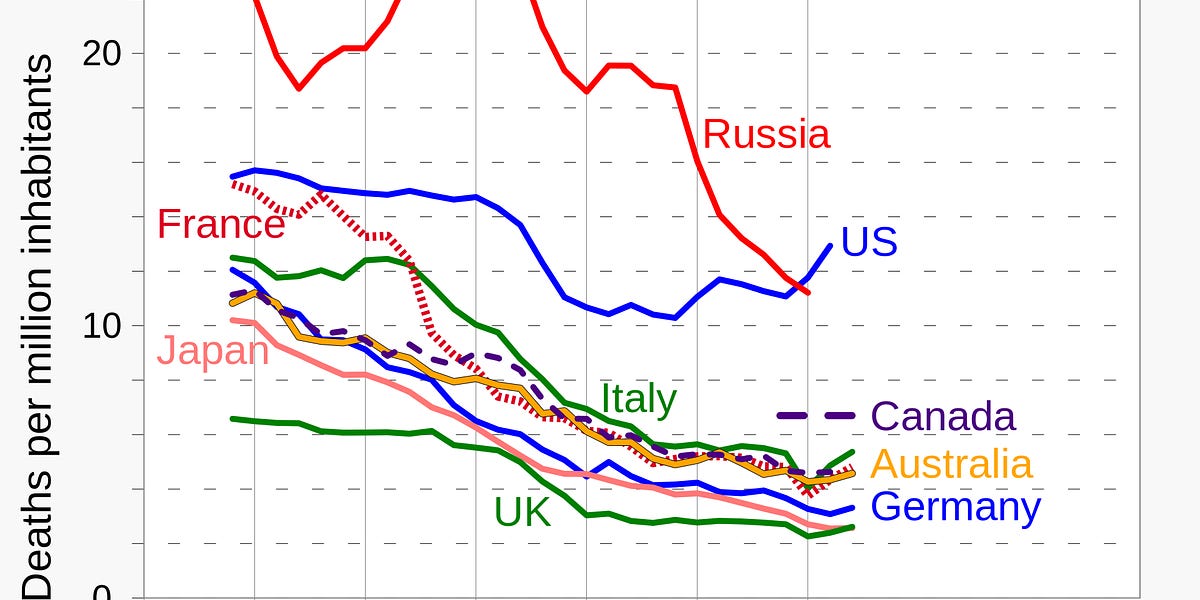Businesses Are Getting People Killed

🌈 Abstract
The article discusses the issue of traffic violence and the obstacles to curbing it, particularly the influence of local commerce and merchant groups. It highlights several tragic incidents where drivers have killed or severely injured pedestrians and cyclists, often with little to no consequences. The article argues that the primary obstacle to implementing safety improvements is local businesses and merchants who prioritize car-centric policies over the safety of alternative modes of transportation.
🙋 Q&A
[01] Businesses Are Getting People Killed
1. What are the key issues discussed in this section?
- The article discusses several tragic incidents where drivers have killed or severely injured pedestrians and cyclists, with little to no consequences for the drivers.
- It argues that the primary obstacle to implementing safety improvements is local businesses and merchants who prioritize car-centric policies over the safety of alternative modes of transportation.
- The article suggests that the justice system treats cars as essential to people's mobility, with none of the caution and responsibility expected of a car's use.
- It states that every day in America, people die at the hands of drivers who will never suffer any consequence for their actions.
2. What are the examples of traffic violence incidents mentioned in this section?
- A driver in Berkeley rammed into a cyclist, severing the man's leg, due to a previous decision by business owners and a pro-car council member to kill a bike lane proposal.
- A reckless, impatient driver in San Francisco lost control and rammed into a mother, father, and their two babies waiting at a bus stop, killing the entire family.
- Another driver coming too fast off a freeway off-ramp struck a family and killed their baby.
3. What is the author's perspective on the consequences for the drivers in these incidents?
- The author suggests that the drivers should not be thrown in jail, even though their reckless actions killed people, as the evidence suggests.
- The author places most of the blame for these accidents on traffic engineers and city planners who let drivers speed through crowded pedestrian areas.
- The author argues that a responsible society would have barred these drivers from driving in dense, transit-rich, populated areas like San Francisco at the very least.
[02] Obstacles to Curbing Traffic Violence
1. What are the key obstacles to curbing traffic violence mentioned in this section?
- The number one obstacle to any safety improvements is local merchants and commerce interests, who believe that any customers they get are drivers.
- Merchants are "car-brained" and disproportionately listen to their patrons who drive and complain about parking, while ignoring the needs of transit riders, cyclists, and pedestrians.
- Even in progressive cities like Berkeley, transportation decisions are dictated by science illiterates and business interests, not the city's intellectuals.
- Business interests in the West Portal neighborhood of San Francisco are already organizing to stop any improvements to the street where a family was killed by a car.
2. What is the author's perspective on the impact of these obstacles?
- The author argues that these obstacles have led to the failure of "Vision Zero" plans to eliminate traffic deaths in cities across the United States.
- The author suggests that these obstacles are causing a negative side-effect of increasing the number of uninsured drivers, which is why hit-and-runs keep increasing.
- The author calls for citizens to hassle their local elected officials, form groups, start petitions, and let local businesses know that patrons besides motorists matter.
3. How does the author view the role of local businesses and merchants in this issue?
- The author suggests that local businesses and merchants are "so indoctrinated by decades of car-centrism that they harm their own bottom line," as a car-free corridor would actually increase profits for local businesses.
- The author acknowledges that the merchants are not bad people, but they are "indoctrinated by decades of car-centrism" and don't know better.